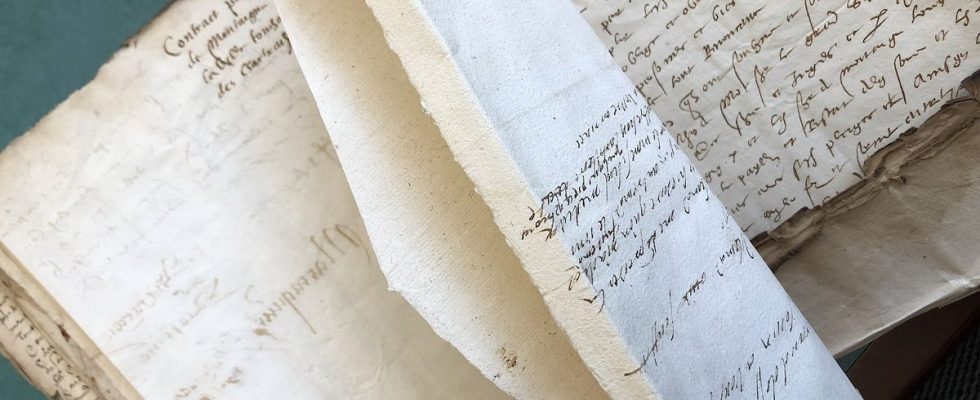Bordeaux researcher Evelien Chayes, head of the SION Digit project at the Institute for Research and History of Texts, a CNRS unit, remembers well the day when she accidentally discovered a text written by the great writer and philosopher Michel de Montaigne. It is June 2022 and she is going through notarial deeds from the 16th century in the departmental archives of the Gironde, when she comes across a package closed with a thread seam, as was customary at the time.
Familiar with Montaigne’s writings, she quickly understands that the documents are linked to the former mayor of Bordeaux. “I saw Montaigne’s writing when the seam hadn’t yet come off, I was very careful, she says. It’s a bit intimidating, it’s a whole document and you don’t have the chance to find an autograph text by Montaigne every day. Once the seam was removed, she was able to study the documents with the help of specialist Alain Legros, with whom she co-wrote an article published this month in the magazine Library of Humanism and Renaissance.
The tied notarial deeds, dated 1584, relate to contracts signed with craftsmen for the project to build a winery in Chartrons, near Château Trompette, led by Michel de Montaigne, then mayor of Bordeaux. We know that this project will be used by ultra-Catholics to denigrate the city councilor and try to question his re-election, in vain. At that time, conflicts enamelled with violence animate relations between Catholics and Protestants and we are on the eve of what is called the 8th war of religion (1585-1598).
A draft letter on the back of a notarial deed
A handwritten text is on the back of one of his notarial deeds, it is the draft of a letter of which the final version has disappeared. This is an important discovery just because only about twenty letters written by Montaigne’s hand have gone down in history. “We see him correcting himself and he does his best for an effective missive that will not offend his interlocutor”, comments Evelien Chayes, marked by the neatness and beauty of his calligraphy.
The letter is addressed to the Duke of Epernon, then a favorite of King Henry III, who is camped on the right bank of the Garonne but is reluctant to enter the Gironde capital without being sure that he will be greeted with great pomp. as previously in Orléans and Poitiers. With his escort of 500 gentlemen, the Duke expects nothing less than cannon fire to celebrate his arrival. Montaigne takes particular care to write to him to reassure and flatter him, with success.
“The Duke of Epernon would play an important role in convincing the future King Henri IV to be on Henry III’s side, against the ultra-Catholics and then for him to convert to Catholicism”, analyzes the researcher. If the 8th war of religion is not prevented, she believes that through his talents as a diplomat, Montaigne, a Catholic, “contributed to avoiding violence”. The manuscript, which fits on half a sheet, has found its place in the archives after being analyzed by experts.
The original copy of the Essays registered with Unesco
Furthermore, Unesco has just registered the original copy of the Essays, entirely annotated by Montaigne, at the prestigious Memory of the World register. Since January 2018, the curators of the municipal library of Bordeaux and a scientific committee (including Evelien Chayes and Alain Legros) have been working on the recognition of this work as world heritage.
The author of the Essays had worked with Marie de Gournay on an edition of 1588 to prepare a new edition (he died in 1592 and the last edition was published posthumously, in 1595). “This copy teeming with corrections and handwritten additions is kept at the Mériadeck library in Bordeaux, explains Evelien Chayes. It is called “Exemplaire de Bordeaux”. It is very valuable because it shows the genesis of the work. »

